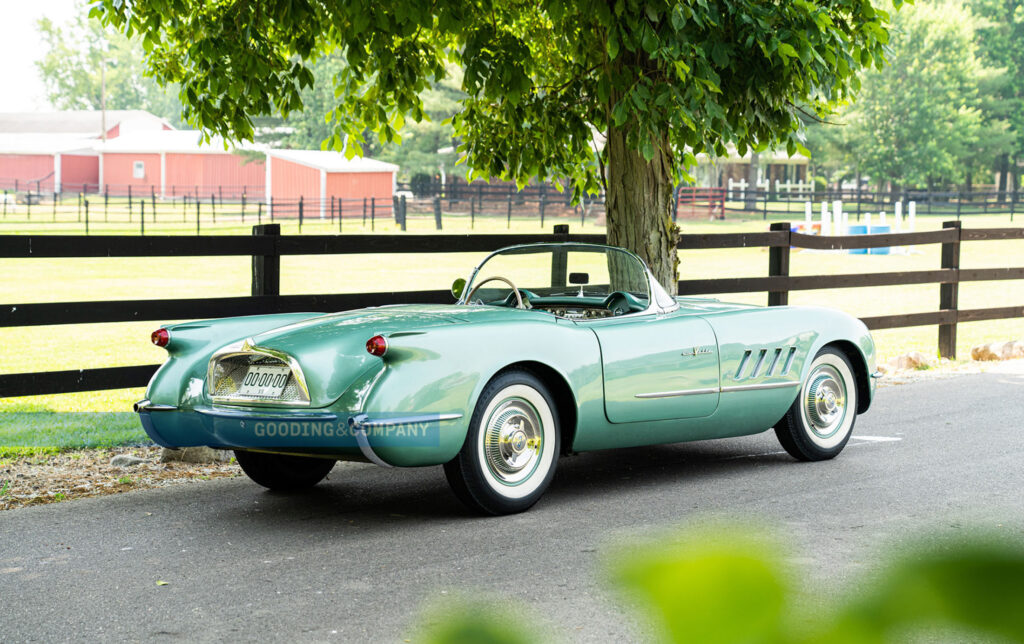Nineteen fifty-five was a watershed year for the Corvette thanks to the much-needed arrival of Chevy’s small-block V8 engine. But given how comprehensively that engine would change the character and desirability of the Corvette, and the fact that Ford began fielding its own two-seater, the Thunderbird, in 1955, it seems odd that Chevy didn’t make any styling changes until 1956.
In reality, behind the scenes GM designers did consider refreshing the still-new, but slow-selling C1, and this surviving prototype of a canned 1955 facelift is the proof. The stunning one-of-one Vette is heading for auction, where it’s fascinating backstory is sure to get bidders furiously waving their wallets.
Styling tweaks that differentiate it from other 1954 and 1955 Corvettes include the four rectangular vents on each front fender, a simpler chrome molding strip below those vents, a different grille with a mesh insert, a hood bulge and simulated vent, an extended trunk panel and exhausts that exit through the bumpers, rather than the bodywork.
Ultimately, GM bosses opted not to go ahead with the proposal, preferring to save their efforts for a more major facelift that would debut for the 1956 model year. Which makes this car all the more special, and that’s not its only claim to fame. It started life as one of around 15 handlaid fiberglass bodies assigned with internal “Shop Order” codes rather than regular VIN numbers. One of these cars was the original 1953 Motorama car, while others were used to create spinoffs like the Corvair, Nomad and Hardtop that appeared at the following year’s Motorama.
Related: You’ll Be Holding Back Tears Watching 1962 Corvette Fall Off A Transporter Truck

This car is believed to have started life as a pale yellow Hardtop show car assigned an S.O 2000 code before being repurposed as S.O 2151, a canvas for designers to show how a 1955 facelift of the C1 might look. Before the new trim was added, the Corvette was fitted with an upgraded version of the Blue Flame inline six featuring a solid-lifter cam (despite the “V” on the side drawing attention to the coming-soon V8) and painted Bermuda Green.
Somehow, the car survived the crusher after the project was axed and ended up in private hands, eventually being picked up in 1975 by a George F. Campbell, in a mess and minus most of its prototype features. Campbell spent four decades collecting parts for a restoration program but died before that could start. Fortunately, its next owner did get the job done, and in some style, netting the C1 a Founders Award at The Amelia Concours d’Elegance in March 2023. Now it’s heading for auction with Gooding & Co, which estimates that it could sell for $1.5-2 million.































